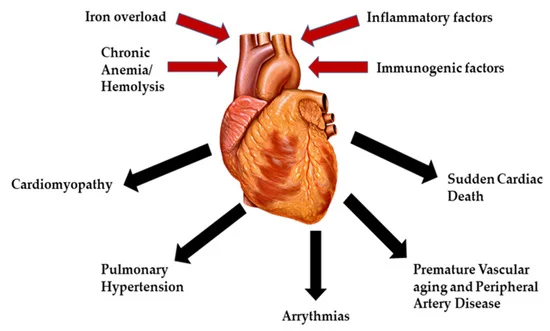Chronic iron overload, also known as transfusional hemosiderosis, is a serious medical condition that occurs when excess iron accumulates in the body due to frequent blood transfusions. This condition commonly affects individuals with disorders requiring ongoing transfusions, such as thalassemia, sickle cell anemia, and myelodysplastic syndromes. Without proper management, chronic iron overload can lead to severe organ damage and life-threatening complications. Below, we delve into the causes, symptoms, complications, and treatment options for this condition.

Causes ofChronic iron overload due to repeated blood transfusions
Frequent blood transfusions are the primary cause of chronic iron overload. Each unit of transfused blood contains approximately 200-250 mg of iron. While the body lacks a natural mechanism to excrete excess iron, repeated transfusions result in iron accumulation in vital organs such as the liver, heart, and endocrine glands. Over time, this overload leads to toxicity and organ dysfunction.
Other contributing factors include:
- Ineffective erythropoiesis: Seen in conditions like thalassemia, where increased gastrointestinal iron absorption exacerbates the problem.
- Inadequate iron chelation therapy: Failure to initiate or adhere to iron chelation protocols can worsen iron buildup.
Symptoms of Iron Overload
The symptoms of chronic iron overload vary depending on the extent of iron accumulation and the organs affected. Early stages may be asymptomatic, but as iron levels rise, patients may experience:
- Fatigue and weakness
- Joint pain
- Abdominal discomfort
- Bronzed or darkened skin tone
As the condition progresses, specific organ dysfunction may present:
- Liver: Hepatomegaly, fibrosis, cirrhosis
- Heart: Cardiomyopathy, arrhythmias, heart failure
- Endocrine system: Diabetes, hypogonadism, hypothyroidism
Complications of Chronic Iron Overload
Unchecked iron accumulation poses significant health risks. Major complications include:
- Hepatic damage: Chronic liver disease, cirrhosis, and an increased risk of hepatocellular carcinoma
- Cardiac issues: Iron deposits in the myocardium can lead to arrhythmias and congestive heart failure
- Endocrinopathies: Damage to endocrine glands may result in diabetes mellitus, delayed puberty, or infertility
- Infections: Iron overload may increase susceptibility to infections, especially from organisms like Yersinia enterocolitica
Diagnosis
Early diagnosis is critical to prevent irreversible damage. Diagnostic tools include:
- Serum ferritin: Elevated levels suggest iron overload, though this test may be influenced by inflammation or infection
- Transferrin saturation: Measures the percentage of transferrin saturated with iron
- Liver iron concentration (LIC): Quantified using imaging techniques like MRI
- Liver biopsy: Invasive but definitive method to assess iron content
Management and Treatment Options
Effective management of chronic iron overload aims to reduce iron levels and prevent complications. Key treatment strategies include:
1. Iron Chelation Therapy
Iron chelation therapy is the cornerstone of treatment. Chelating agents bind excess iron, allowing it to be excreted via urine or feces. Commonly used agents are:
- Deferoxamine: Administered via subcutaneous or intravenous infusion
- Deferasirox: Oral formulation with good patient compliance
- Deferiprone: Particularly effective for myocardial iron removal
2. Phlebotomy
In patients without anemia, therapeutic phlebotomy may be used to remove iron-rich blood, though this is rarely applicable for transfusion-dependent individuals.
3. Lifestyle Modifications
- Avoid iron-rich foods and supplements: Limit red meat, shellfish, and fortified cereals
- Limit alcohol consumption: Reduces the risk of liver damage
- Monitor Vitamin C intake: Excessive vitamin C can increase iron absorption
4. Regular Monitoring
Routine assessments, including serum ferritin, liver function tests, and cardiac evaluations, are essential for tracking iron levels and organ health.
5. Bone Marrow Transplantation (BMT)
For eligible patients with underlying conditions like thalassemia, BMT offers a potential cure and eliminates the need for ongoing transfusions.
Preventive Measures
Prevention focuses on minimizing iron accumulation through:
- Timely initiation of iron chelation therapy
- Close monitoring of iron indices
- Educating patients on adherence to treatment protocols
Prognosis
With early detection and effective management, the prognosis for patients with chronic iron overload has significantly improved. However, untreated or poorly managed cases can lead to irreversible organ damage and reduced life expectancy.